
How to Localize Your App in Brazilian Portuguese
Brazil, with its $2.18 billion revenue in 2020, stands as a major Latin American economy. It’s also the world’s 13th largest game market. To thrive here, localizing your apps and games into Brazilian Portuguese is crucial. In this blog, we provide concise, practical tips to localize your apps/games successfully in Brazil.
Mobile landscape in Brazil
iOS vs Google Play
In Brazil, Android dominates the mobile market with over 83% of smartphone users. High taxes make Apple devices cost-prohibitive for many Brazilians, leading them to prefer affordable Android phones.
Yet, iOS users often spend more on in-app purchases.
So, when launching your app in Brazil, prioritize Android but also include iOS.
Top apps & games
Localized apps and games dominate the top charts in Brazil. In fact, when looking at the top charts, we mostly see apps and games that have localized both their metadata and creatives for the Brazilian market.
In terms of app preferences, Brazilians lean more toward Entertainment, Photo & Video, and Social Networking apps. These categories currently generate the most downloads for developers and dominate the top charts.
For instance, 7 out of the top 10 free apps on the App Store are part of at least one of these categories (Entertainment, Photo & Video, or Social Networking).
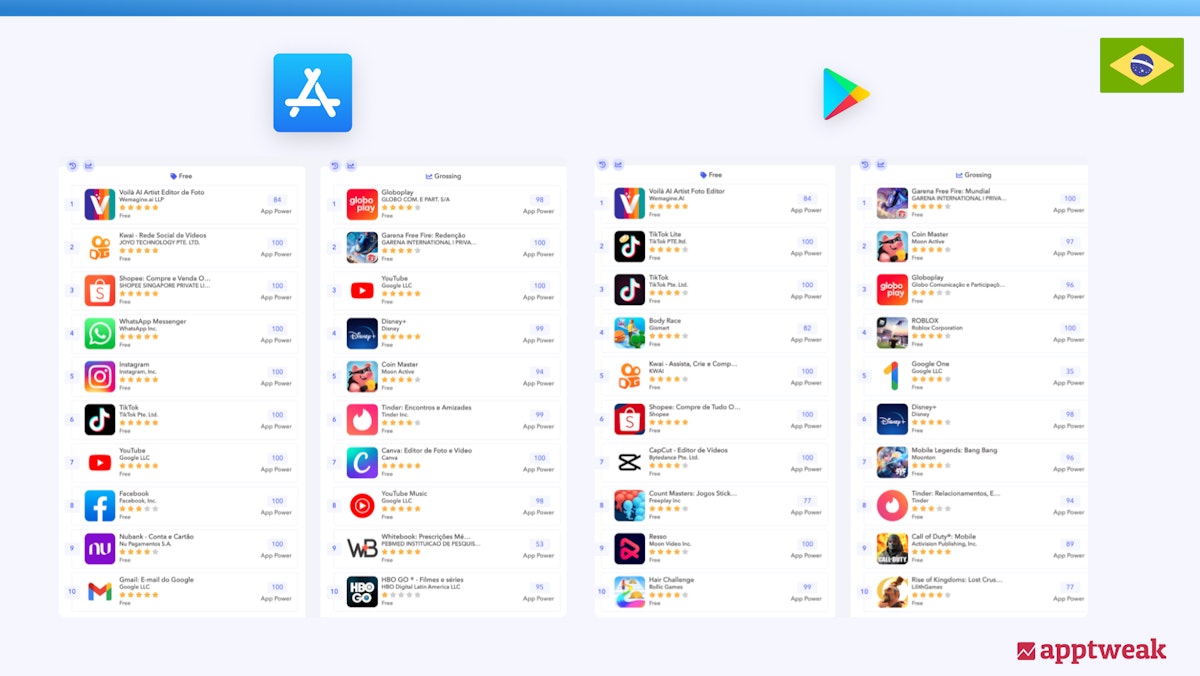
Games are tremendously popular in Brazil, the 13th biggest game market worldwide with $1.45 billion in game revenue. LocalizeDirect’s 2021 report reveals men favor Action, Racing, Strategy, Adventure, and Sports games. Women, constituting 52.6% of gamers, lean towards Strategy, Adventure, Card/Trivia, and Racing games. Overall, strategy and adventure games are the most popular genres in Brazil.
Language
1. Length & alphabet
Brazilian Portuguese is a wordy language that generally requires much more space. When translating text from English, Brazilian Portuguese requires 25-30% more space. As a result, it takes much more time for users to read subtitles or text dialogue (if any) in Brazilian Portuguese so it is important to consider this when developing in-app and in-game content.
Unlike English, the Brazilian Portuguese alphabet is made up of many special characters. So it is vital to use a font that provides full support for these characters. Designers in Brazil often use the fonts Helvetica, Baskerville, Times, or Gotham, but whichever font you pick, make sure it supports the full library of Portuguese punctuation and accents, including:
- cedilla (ç)
- acute accents (á, é, í, ó, ú)
- circumflex accents (â, ê, ô)
- tilde (ã, õ)
- grave accents (à, and more rarely è, ì, ò, and ù)
If characters are not properly implemented in Brazilian Portuguese, the entire meaning of a word can change. This can cause comprehension gaps in your text.
2. European Portuguese vs Brazilian Portuguese
There is a misconception that Brazilian Portuguese and European Portuguese are the same language.
In fact, they are actually very different. They differ in spelling, pronunciation, and even entire words can often totally change. This is because Brazilians make verbs out of nouns, they condense expressions, and Brazilian Portuguese vocabulary is also influenced by African and Native American origins.
For instance, in Brazil, a bathroom is a “banheiro,” while in Portugal it is called a “sala de banhos.” In fact, the majority of market players in Brazil reject European Portuguese localizations. So, if you want to localize for the Brazilian market, either localize specifically for Brazilian Portuguese or do not localize at all.
3. Don’ts when translating to Brazilian Portuguese
Foe Brazilian gamers, bad localization into Brazilian Portuguese, such as literal translations, nonsensical sentences, grammar mistakes, or poor language, can ruin the experience and push gamers to switch back to English. For example, games localized for the Brazilian market often end up using slang and terminology from Rio de Janeiro.
It is important to note that this is a local slang not used across the country and should be avoided (there are at least 16 variants of Portuguese spoken in Brazil). It is thus important to work with a native speaker for translations to make sure that the Brazilian Portuguese you implement is accepted and understood by the whole country.
We also recommend to always give gamers the option to play in English or in Brazilian Portuguese.
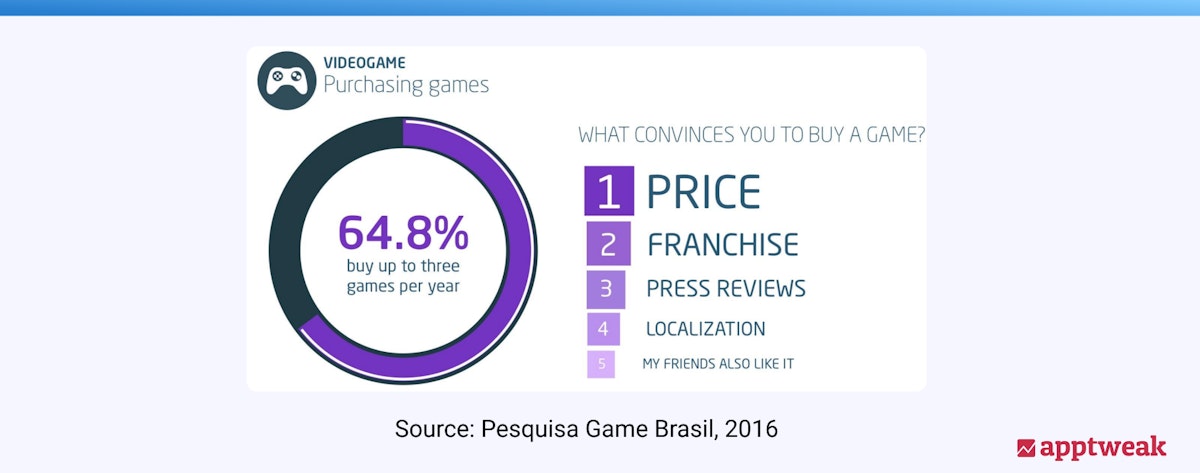
Boost your app downloads with this comprehensive guide to app store localization
Metadata localization
1. Title
For the app title, English or foreign brand names are well received and sometimes even perceived as “cool,” especially when it does not make any sense to translate the title. In fact, popular international brands such as Instagram, TikTok, Clash of Clans, and Homescapes only keep their original names in their titles in Brazil.
However, in some cases (particularly on Google Play), several descriptive keywords are added after the brand name in the title, especially for apps. For instance, while Google Meet and AliExpress only include their brand name on the US Google Play Store, in Brazil they add some localized keywords after their brand name to further describe what the app is about.

2. Subtitle/short description
Translate your app’s subtitle (or short description on Google Play) when you enter the Brazilian market, especially when translating the title into Brazilian Portuguese would not make sense or give an idea of what the app is about.
For example, with the American dating app Coffee Meets Bagel, the app title does not describe what the app is about and a Brazilian Portuguese translation would not make any sense. In this case, it is crucial to include a localized subtitle to make the app more appealing to Brazilian users to make them feel as if the app was specifically made for this market.
3. Keyword field/long description
Unlike in the title and subtitle, keywords in the iOS keyword field that would otherwise include special characters do not necessarily have to be written with the special characters.
In fact, sometimes the version of a word without special characters can also have a good – or higher – search popularity compared to the original version (see examples below). That’s because Brazilian users sometimes search the stores without using keyboards with special characters.
So, it’s important to check the versions of keywords with and without special characters before making your metadata selection.
Creatives localization
Brazilian users prioritize app title, subtitle or short description, ratings, and creatives over lengthy descriptions. So screenshots play a significant role in conversion rates.
1. Screenshots
Adapt your screenshots for seasonality
- Localize your screenshots along with text metadata to avoid hurting your conversion from page views to downloads. In Brazil, adapting screenshots for seasonal events is a common practice. However, remember that Brazil mainly lies in the Southern Hemisphere, so seasons differ. For instance, Christmas in Brazil is hot, and school vacations in July occur during winter, unlike Northern Hemisphere countries. Therefore, understanding and accurately referencing seasonal events in your creatives and in-app/game is crucial.
- Many Brazilian apps and games update their creatives for popular events like the Carnival or Rio de Janeiro parades. Games like Free Fire even introduce in-game events specifically for the Brazilian market, offering holiday-themed items.
Use these best practices to create effective in-app/in-game event metadata
Adapt your screenshots for cultural relevance
To make your app or game more appealing to Brazilian users, especially gamers, infuse cultural references and adapt your screenshots’ background.
- Embed cultural elements like carnival costumes or monuments, or local figures such as Neymar Jr, into both your screenshots and the game itself. For instance, DDTank Mobile optimized its first screenshot in Brazil by featuring the Corcovado mountain and the Christ the Redeemer monument. The game also showed Brazilian players with localized outfits, including carnival costumes.

-
When localizing your app screenshots for Brazil, ensure the models reflect the Brazilian population. For instance, Canva effectively adapted its screenshot’s models, background, and content to Brazilian Portuguese, avoiding European Portuguese captions. However, Canva translated the in-app text on the screenshot to European Portuguese but overlooked doing so for Brazilian Portuguese, leaving it in English.

Localizing your screenshots’ metrics, such as currency, date, or measurements, is crucial. Consider using:
- 24-hour clock format
- DD/MM/YYYY date format
- Brazilian Real (R$) over American Dollar ($)
For instance, AliExpress translated its screenshot captions into Brazilian Portuguese but failed to localize the currency. Conversely, Wish localized all screenshot content, including currency and in-app text.
2. Feature graphic
Brazilians enjoy social networks, contests, promotions, and attractive deals.
- Incentivize users to share your app with friends through social media. Provide promotions and special offers (remember to convert the currency to Brazilian Real (R$)).
- Utilize the promo text and Google Play’s feature graphic to achieve this. For instance, TikTok promoted a special offer “Use the code TIKTOKBONUS and make money” using its feature graphic with a Brazilian meme “#TikTokRyka”.
This practice only works for apps with a video, since store listings won’t show the feature graphic for apps without videos.
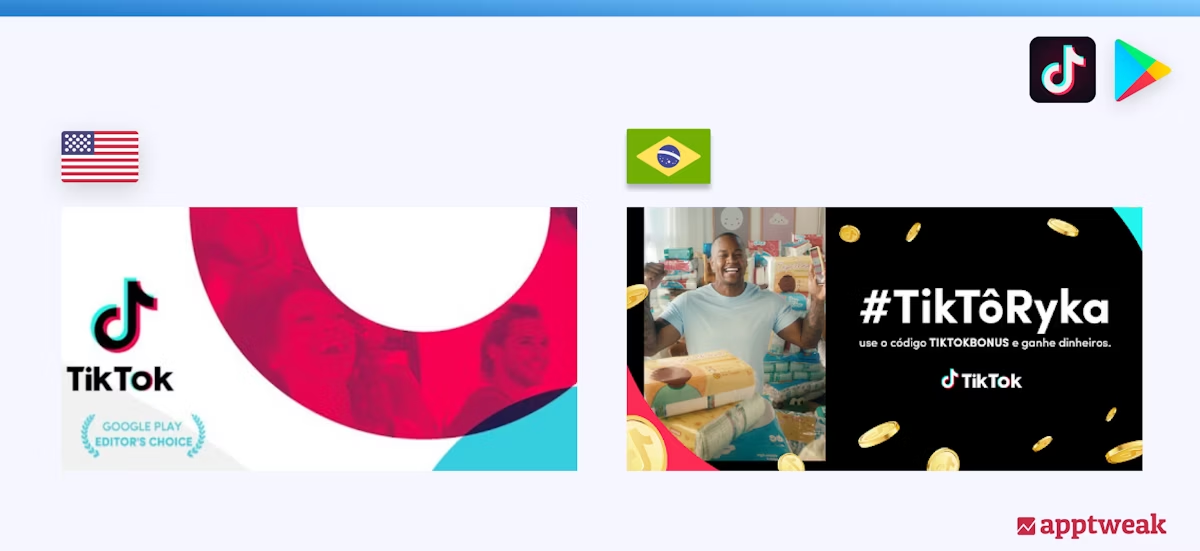
Bonus tips to localize your app for Brazil
1. Tailor your app’s download size
Given the majority of Brazilians prefer affordable devices with low storage (2 to 4GB), it’s essential to optimize your app or game accordingly. Since 4G is more prevalent than Wifi, Brazilians often favor LITE versions of apps.
Aim to decrease your APK install size to under 40MB for apps and 64MB for games, ensuring they function offline or with weak network connectivity.
2. Keep an eye on app pricing
For your app or game pricing, round to the nearest ‘90 or ‘99 cents. This is a common practice in Brazil.
Remember, Google Play in Brazil supports tax-inclusive pricing. So, ensure your price accounts for all taxes, including VAT.
3. Avoid sensitive topics
Brazilians, particularly the younger demographic, generally show tolerance towards sensitive topics.
However, themes involving racism or discrimination may elicit negative responses. Sexual topics can become contentious due to frequent implications of women’s objectification, a point of concern in Brazil’s predominantly female gaming community.
So, it’s advisable to steer clear of these subjects. Displaying suicide, excessive violence, or cruelty could lead to app store bans. For instance, games like Mortal Kombat and Doom have previously faced bans in Brazil for showcasing excessively violent and cruel scenes.
If you want to learn more about how AppTweak can help you with your app localization, start a 7-day free trial!


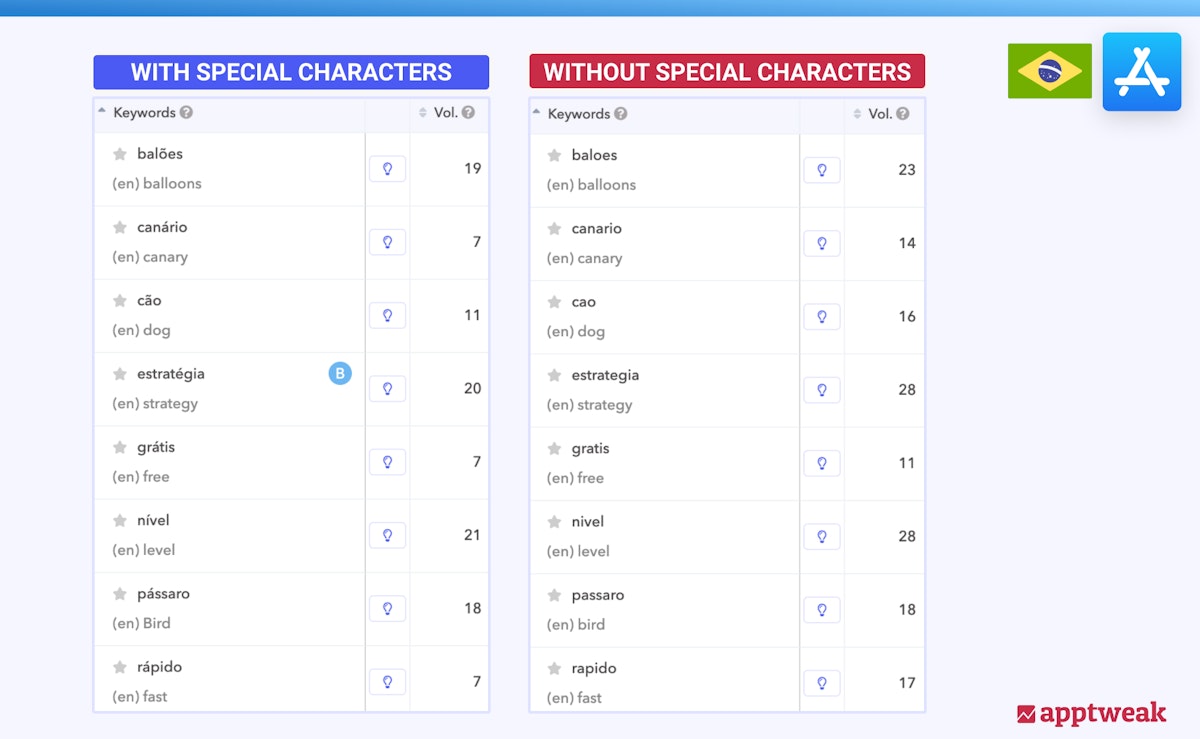
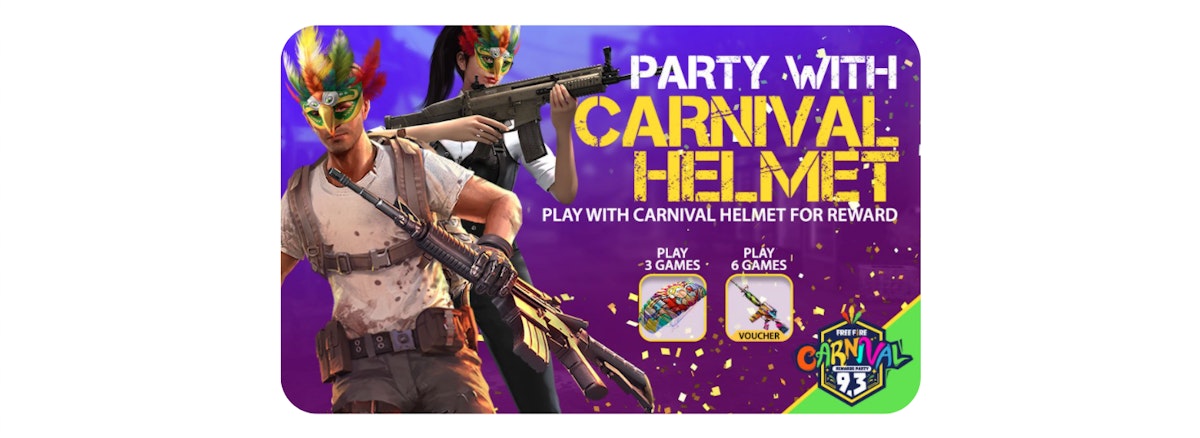
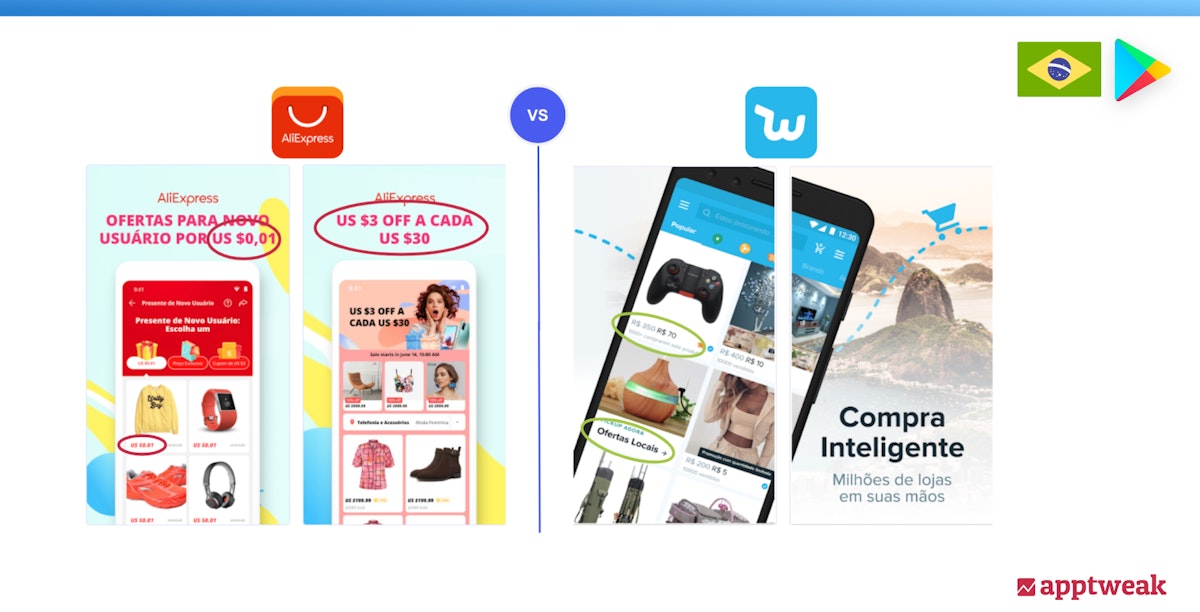

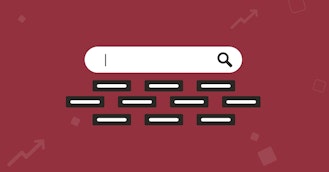

 Lina Danilchik
Lina Danilchik

 Elizabeth Devine
Elizabeth Devine

 Ian Pernia
Ian Pernia